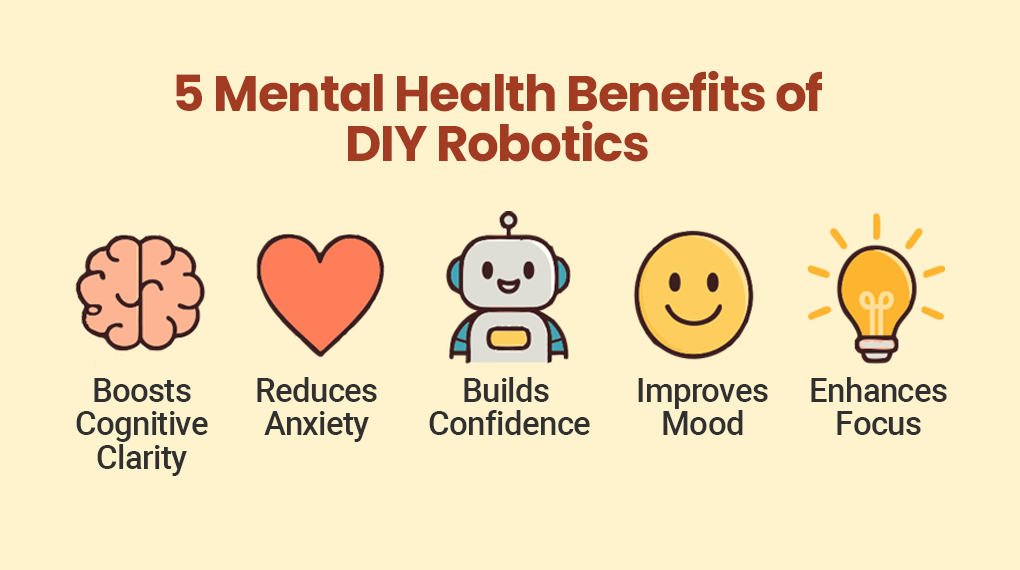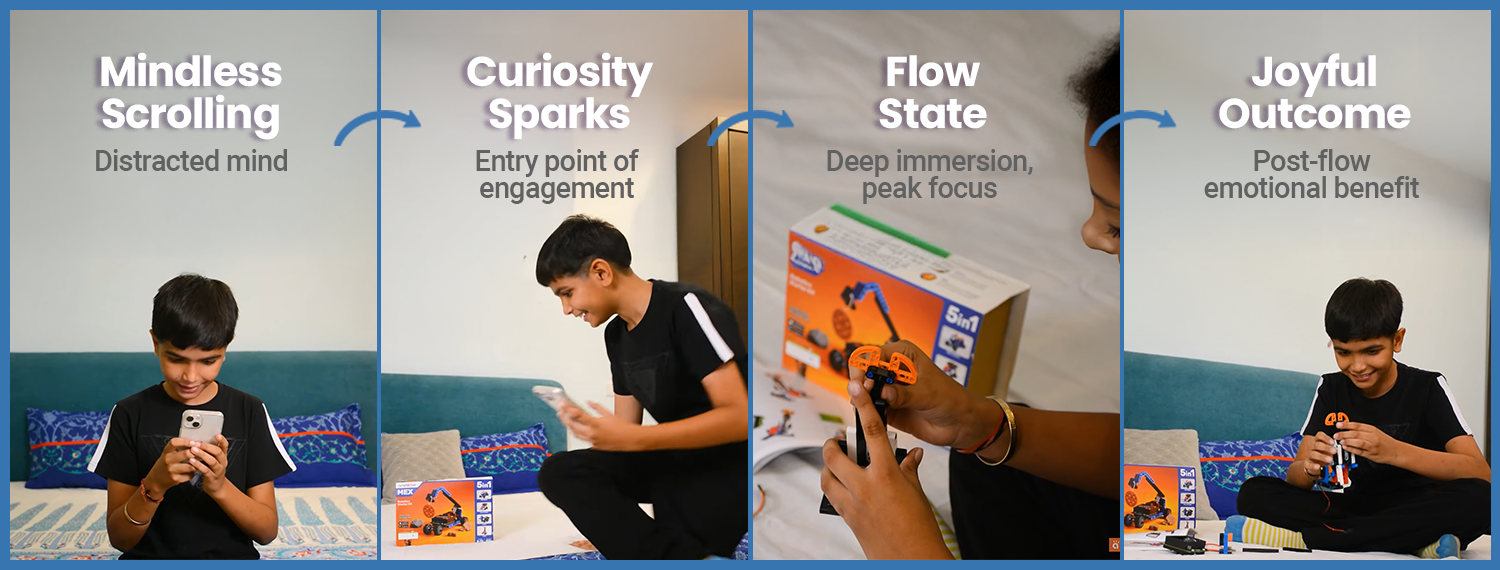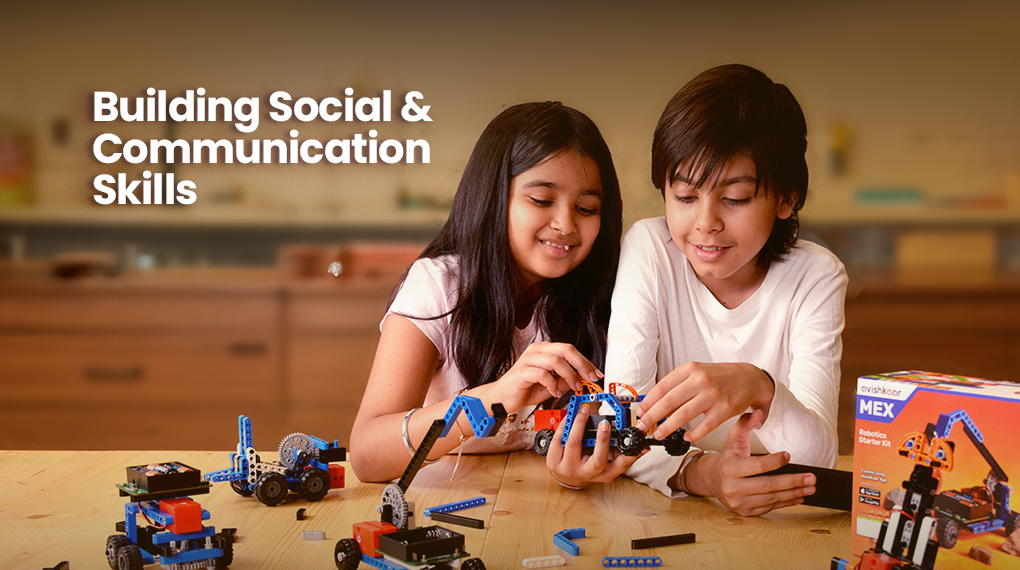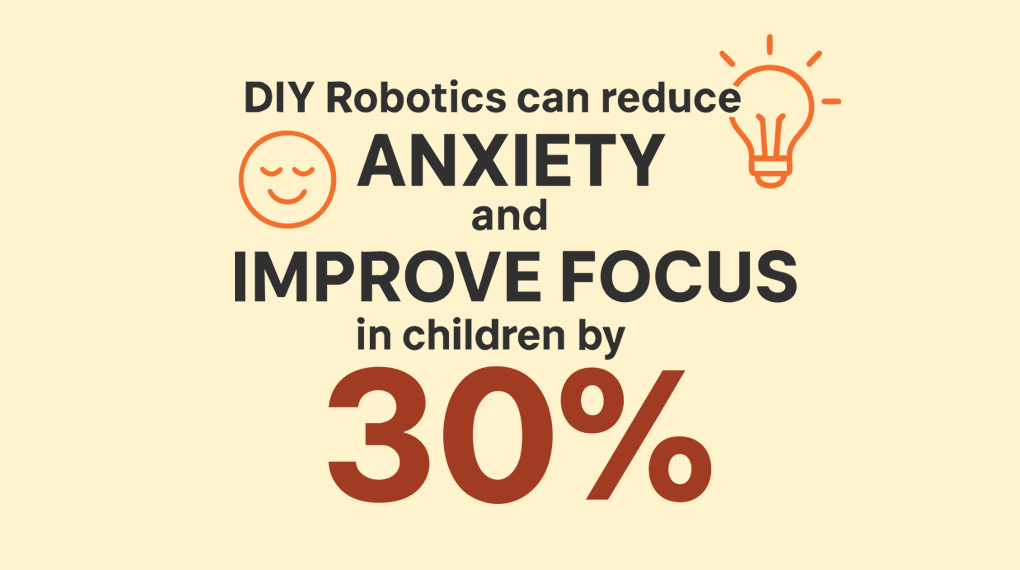
Introduction: The Mental Health Crisis in Indian Children
Rising Anxiety and Stress Among Students
In classrooms throughout India, an unseen crisis continues to grow. Recent research reveals that nearly one-fifth of Indian children face significant mental health struggles as anxiety and stress levels surge. The combined weight of academic expectations, the influence of social media, and rapidly shifting societal norms has created challenging conditions for young minds. Traditional therapy, though effective, often suffers from hurdles like accessibility, high costs, and lingering social stigma.
Smart parents are now using an innovative-approaches, such as DIY robotics, as unconventional yet powerful allies in nurturing mental wellness in children. By combining hands-on STEM activities with creative problem-solving, these DIY projects offer a fresh avenue for emotional growth that complements established therapeutic methods.
The Promise of DIY Robotics
DIY robotics goes far beyond typical STEM learning - it is a transformative medium that sparks children's natural curiosity while cementing vital life skills. In this supportive, judgment-free atmosphere, engaging with robotics kits for kids encourages children to view each failure as a learning opportunity and every challenge as a step toward building persistence, creativity, and self-esteem. The tangible benefits of coding for kids and hands-on robotics projects are clear: they not only hone technical abilities but also enhance emotional regulation, boost social skills, and enrich overall well-being. This blend of educational robotics benefits and holistic development is redefining how we support children's mental health through engaging, play-based learning.

The Science Behind DIY Projects and Mental Wellness
Creative Expression as an Emotional Outlet
Constructing and programming robots offers children a creative outlet that transcends traditional forms of art or writing. Whether a child is assembling their first robotic arm or programming a simple clap counter, they are not merely learning technology - they are projecting their inner thoughts and emotions into a tangible, interactive creation.
Psychological studies consistently demonstrate that hands-on creative activities trigger the release of dopamine and endorphins, natural mood enhancers that help counteract stress and anxiety. Moreover, the process of turning an abstract idea into a functioning robot empowers children with a sense of actions and consequences - essential elements in building mental resilience. The versatility of robotics kits for beginners, from color sensor projects to interactive educational toys, serves as a reflection of each child's inner world, promoting self-expression and reinforcing their emotional strengths.
The Happiness-Learning Connection
There is a powerful, bidirectional link between happiness and learning. Neuroscience shows that happy children absorb new skills more effectively, and the act of learning itself contributes to happiness. When a child completes a robotics project - using either an entry-level robotics kit for 8-year-old beginners or tackling a more challenging STEM task - the brain rewards the effort with a surge of feel-good chemicals. This neurochemical boost not only reinforces their learning behaviors but also cultivates positive emotional states. Educational psychology research confirms that children in a positive frame of mind become more creative, solve problems more effectively, and remember lessons better. In this light, STEM activities like DIY robotics create enriching, multisensory experiences that nurture both cognitive growth and emotional stability.
Specific Mental Health Benefits of DIY Robotics
Stress Reduction and Emotional Regulation
A wealth of research - citing over 12,500 peer-reviewed studies - demonstrates that hands-on robotics activities can significantly reduce stress in children. The structured yet creative process of building and coding robots induces a meditative state comparable to mindfulness practices, enabling children to regulate their emotions more effectively. When engaging with a robotics kit for kids, children often enter a “flow state,” where they become completely absorbed in the task at hand, allowing anxious thoughts to dissolve naturally. The immediate feedback derived from testing and programming robots offers a constructive outlet for frustration and reinforces the idea that every problem is solvable. Multiple case studies from educational settings confirm noticeable improvements in emotional regulation among students who regularly participate in DIY robotics projects, with these coping strategies extending to other aspects of life - be it academic pressures or social hurdles.

Building Social and Communication Skills
One of the surprising spin-offs of robotics for children mental health is its positive influence on social development. Although robotics is technology-focused, the collaborative nature of many projects fosters enhanced communication and teamwork skills. When children work together on assembling a robot, they naturally practice articulating ideas, negotiating solutions, and celebrating group successes. The robots themselves act as effective conversation starters, alleviating social anxiety by offering a concrete focal point for discussions. For children who are naturally shy or introverted, showcasing their robotics projects becomes a safe platform to develop public speaking and interpersonal abilities. This process not only boosts self-esteem but also translates into more confident social interactions beyond the classroom.
Fostering a Growth Mindset and Resilience
Perhaps the most profound benefit of DIY robotics lies in teaching children to perceive setbacks as opportunities for learning. When their robot does not function as intended, children are encouraged to debug, iterate, and persist - essential lessons in resilience. Research consistently shows that regular engagement with robotics programming cultivates a stronger growth mindset, where obstacles are seen as puzzles to be solved rather than dead ends. This iterative nature of coding for kids nurtures patience and perseverance, whether through simple challenges suited for a 10-year-old or more complex projects for older children. In all cases, the process builds confidence and equips children with strategies to overcome difficulties across various domains of life.
DIY Robotics vs. Traditional Mental Health Approaches
Complementing Professional Therapy
DIY robotics isn't meant to replace standard mental health treatments but rather to complement them. Many therapists have begun to integrate hands-on, creative activities - like robotics projects - into their practice because these approaches offer a tangible way for children to express and process emotions. Working with engaging educational toys creates a non-intimidating environment where children feel at ease discussing their feelings. Additionally, the key skills developed through robotics for children mental health - such as problem-solving, emotional control, and effective communication - are directly transferable to traditional therapy sessions. The boost in self-confidence gained through completing robotics projects often leads to higher engagement and better outcomes in other therapeutic interventions.
Advantages for Neurodivergent Children
Children with autism spectrum disorders or ADHD frequently derive significant benefits from well-structured robotics activities. The structured, logical nature of coding appeals to neurodivergent learners, while the tactile aspect of building robots delivers valuable sensory input. Many of the best robotics kits for kids with feature visual programming interfaces, which simplify abstract concepts into clear, manageable tasks. The immediate, predictable feedback from robots is particularly effective in keeping children with ADHD focused and engaged. For those on the autism spectrum, robots provide a calm and predictable space to practice social interactions without the ambiguity of human behaviors - a crucial step before translating these skills into real-life interactions.

Practical Implementation: Getting Started with Therapeutic DIY Robotics
Age-Appropriate Robotics Projects
Choosing the age-appropriate robotics kit according to a child's age and developmental stage is critical for maximizing mental health benefits. For younger children between the ages of 5 and 8, simple projects - like constructing basic moving robots or programming light displays - offer instant gratification and build foundational skills. A robotics kit for a 6-year-old should feature large, colorful components and visual, block-based programming interfaces that are both intuitive and engaging. For older children aged 9 to 15, more complex kits involving sensors, motors, and advanced coding challenges provide deeper learning opportunities and foster the persistence necessary for tackling more intricate problems. Tailoring the project to the child's abilities ensures that these experiences contribute meaningfully to DIY robotics mental health kids initiatives.
Creating a Supportive Learning Environment
The setting in which children engage with robotics activities plays a significant role in their overall benefit. Cultivate a dedicated space - be it at home or in a classroom - where experiments are welcomed and mistakes are celebrated as learning milestones. Building in routines such as deep breathing exercises or mindfulness practices before starting a session can help children become aware of their emotions and set a positive tone. Structuring projects into small, manageable steps not only prevents overwhelming feelings but also allows children to celebrate incremental successes. This balanced approach reinforces their growing confidence and ensures that STEM activities mental wellness remain accessible and enjoyable.
Measuring Progress and Well-being
Regularly tracking your child's emotional and cognitive development is key. Observe their response to challenges, their persistence when things don't work out, and changes in overall mood and self-confidence. Many parents notice that, after engaging in DIY robotics projects, their children begin to apply the problem-solving skills they learned to everyday challenges - from homework puzzles to social conflicts. Documenting these projects through photos and videos not only creates a portfolio of their achievements but also serves as a visual diary of growth and resilience over time.
[#image#]https://avishkaar-assets.s3.amazonaws.com/blogs/childrens-mental-health_blog_Emotional_Outlet.png?size90[##image##]
Success Stories and Case Studies
Research-Backed Evidence
Recent findings published in pediatric psychology journals affirm what educators and parents have long observed: children who regularly partake in robotics activities show measurable improvements in emotional well-being and resilience. Studies conducted over six-month intervals have reported enhancements in self-esteem, social interactions, and stress management among participants in structured robotics programs. The longitudinal benefits of these activities - especially for children who initially grappled with anxiety or social challenges - highlight the enduring impact of fostering a growth mindset through hands-on, creative learning.

Getting Started: Your Child's Journey with Therapeutic Robotics
Choosing the Right Kit for Mental Health Benefits
When selecting a robotics kit, consider your child's current interests, developmental needs, and specific mental health objectives. For example, a kit designed for a 12-year-old might offer advanced programming challenges, while younger children benefit from kits that emphasize immediate, visually rewarding projects. Look for options that provide diverse project paths to allow exploration in multiple directions. Avishkaar Kits feature clear instructions yet leave room for creativity can be particularly effective, especially when paired with introductory AI or coding courses to gradually build essential foundations without overwhelming the child.
Building a Routine for Maximum Benefit
Integrate robotics activities into your child's daily or weekly routine as a valuable tool for mental health support rather than mere entertainment. Regular engagement - alternating between screen-based programming and hands-on building - ensures variety in the learning experience and helps prevent digital fatigue. Additionally, involve the entire family in these projects whenever possible. Parents who participate often report stronger bonds with their children and a deeper insight into their interests and challenges, reinforcing the long-term benefits of these initiatives.
Conclusion: Investing in Your Child's Mental Health Through Innovation
DIY robotics offers an unmatched blend of excitement, creativity, and personal growth. Through engaging, hands-on creation, children build the emotional regulation skills, self-confidence, and resilience necessary to navigate life's challenges. The benefits - ranging from enhanced problem-solving to improved social skills - have wide-reaching impacts that extend well beyond the laboratory or classroom, positively influencing academic performance and overall well-being.
As educators and parents, you play a pivotal role in supporting your child's mental health. Embracing innovative strategies such as DIY robotics mental health kids programs creates an environment where learning and emotional development intersect seamlessly. Explore age-appropriate projects, integrate regular robotics sessions into your daily schedule, and share these experiences as a family. Investing in these creative, hands-on learning opportunities now can yield lasting dividends - equipping the next generation with the resilience and optimism they need to thrive in an ever-changing world.
Discover More:
Ready to explore the transformative impact of robotics for children mental health and STEM activities mental wellness? Stay connected with Avishkaar for upcoming workshops, resources, and success stories that continue to demonstrate the remarkable educational robotics benefits in nurturing well-rounded, confident young minds.














